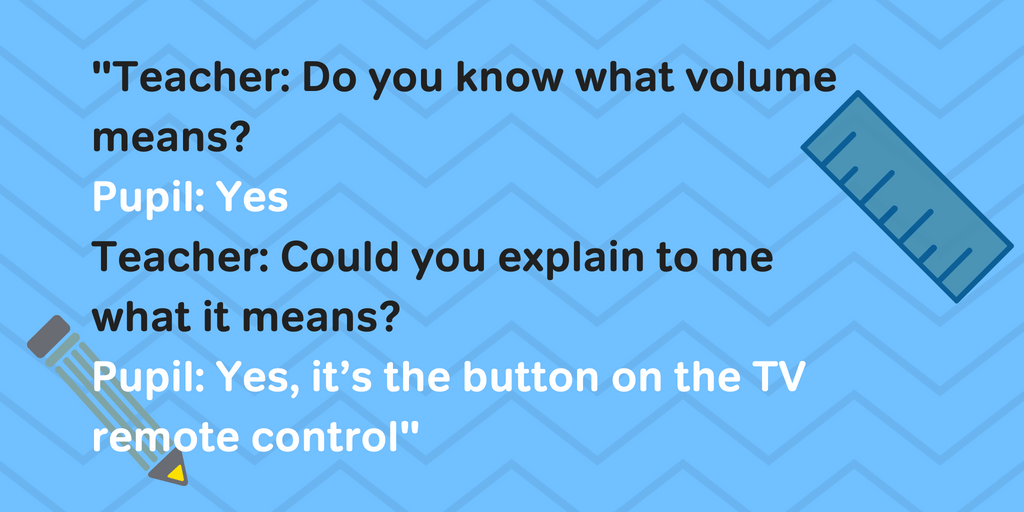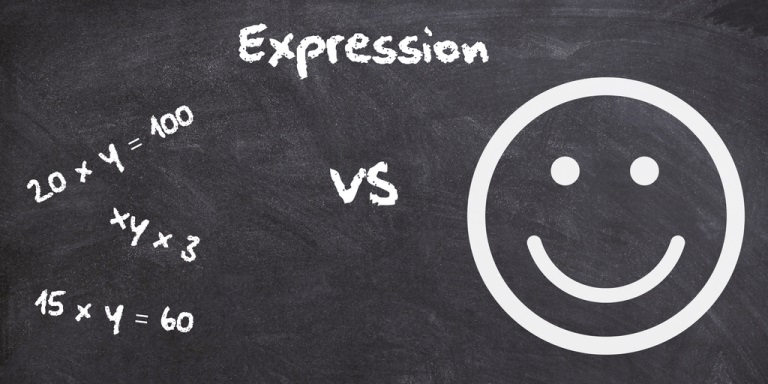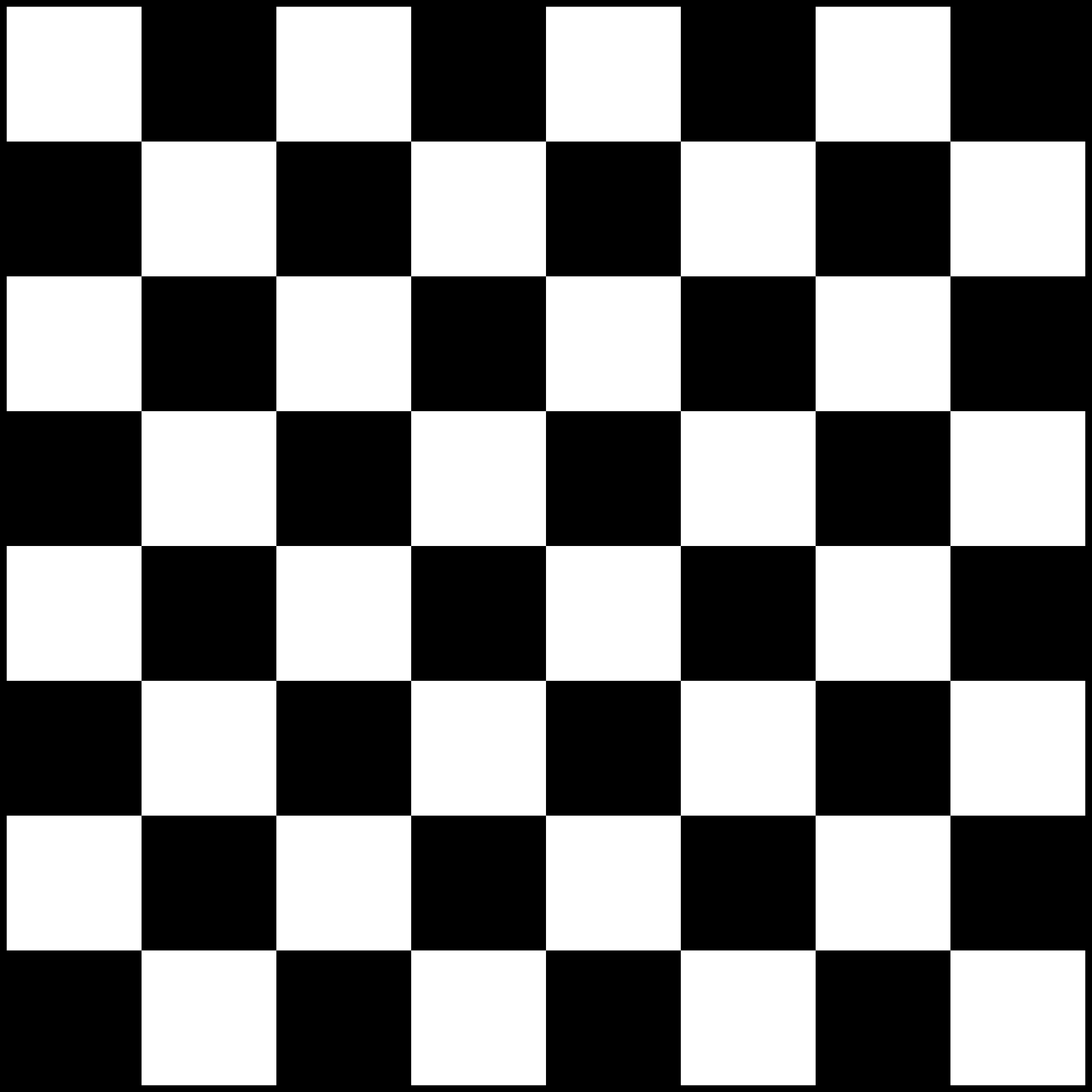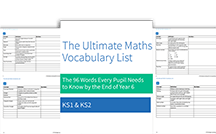Maths Terminology (KS1 & KS2): How to Teach Primary School Pupils Mathematical Terms So They Can Use Them Accurately
The maths terminology we use in the classroom has wide implications for pupil’s learning at KS1 and KS2. Here we look at some of the confusions that can arise in mathematical terms and how you can ensure that you and your pupils share a common maths language and vocabulary
With such a vast number of teaching methods on show in classrooms, it has never been more important to ensure that as teachers our language is as accurate as possible when talking and teaching maths words and phrases to our KS1 and KS2 pupils.
How we use KS2 mathematical terms in the classroom
There are four basic language abilities, and each one is also widely used in Maths.
- Pupils listen to us talking, presenting and explaining
- They read their textbooks, worksheets, and displays
- They present their Maths by drawing and writing
- They ask questions and discuss their ideas to improve their understanding of Mathematical concepts
Understanding mathematical terms and vocabulary can stump many pupils, yet talking in mathematical language is a core competency for them. This leads us to think; how many maths words do pupils hear in lessons, but fail both to understand and use properly?
The maths terminology we use in class at KS1 and KS2 has meaning, but it can easily be misinterpreted by the pupils we’re teaching. Here’s an example adapted and inspired by David Wood’s book ‘How Children Think and Learn’.

Maths is particularly vulnerable to misinterpretation because of the peculiarities and irregularities of many maths words in the English language, and this is exactly why we should never say, “Let’s do some sums.”
Ultimate Maths Vocabulary List
An essential guide for your pupils to develop their knowledge of key words and maths terminology
Download Free Now!The dual terminology of maths
Steve Chinn (2004) in ‘The Trouble with Maths’ argues that the dual terminology of maths is a real problem. The colloquial nature of some common maths words and phrases means that pupils may well have to cope with inconsistencies, which, as we know, doesn’t always turn out well!

Clearly pupils have a lot to cope with when they are sifting and sorting words from the everyday non-mathematical language they encounter, then ‘translating’ it in a maths context. Here are some KS2 maths examples that you might have come across in your own primary maths teaching:
- Acute angle – acute pain
- Borrow (in subtraction) – borrow (lend)
- Bracket ( ) – bracket (shelf)
- Cancel (fraction) – cancel (ticket)
- Capacity (volume) – capacity (potential)
- Carry (addition) – carry (a bag)
- Degree ( ° ) – degree (BSc)
- Differential
- Ellipse
- Expression (xy + 3) – expression (on a face)
- Factor (15 = 5 x 3) – factor 5 sunscreen, X-factor
- Irrational (number)
- Mass (in kg) – mass (in church)
- Mean (average) – mean (nasty)
- Negative (-7) – negative (critical)
- Net (flat) – net (fishing)
- Rational (number)
- Solution (solve) – solution (dissolve)
- Take away (subtract) – take away (food)
As teachers we can directly monitor and help pupils in their interpretations of language by being aware of lexical ambiguity in the words we are using. We need to think twice about the words we use but also leverage this ambiguity as a learning opportunity, to ‘translate’ familiar words into maths.
‘False friends’ can be found in maths terminology
Although we, as teachers, might be vigilant about the everyday mathematical words we use in the classroom, there are some ‘false friends’ that might confuse even us. This means that we’ll then allow pupils to use them incorrectly too.
I’m thinking of the common question you will no doubt have seen a number of times in relation to a chessboard investigation. It asks, ‘how many squares can you see?’
The answer of course is none, because there are no squares – the question just isn’t precise enough.

What it should say is ‘how many square rectangles can you see?’
Precision in Mathematics matters. Let me explain.
Why you need precision in your own mathematical terms
A lack of precise language can impede pupils’ understanding and can easily lead to a lifelong development of misconceptions in Maths. Although in our everyday life we can cope with a fair amount of ambiguity, in Mathematics ambiguity causes problems so it’s not welcome.
A few years ago I became all evangelical about the way pupils were taught mathematical shapes because I observed too many teachers passing on faulty maths to their classes which often went unchallenged.
Maths terminology up close: Square and Rectangle
My number one bugbear was the use of the word ‘square’ as a noun rather than an adjective.
When I started to look at definitions in maths textbooks, maths dictionaries and online materials, I could see that there was a major problem as their definitions were often ambiguous too. Take a look at a maths dictionary yourself and look up ‘rectangle’ and ‘square’ and you will see they are isolated from each other and seen as separate entities.
The fact is, a ‘square’ should never be called a square, but rather a square rectangle. Classroom posters showing common 2D shapes were often guilty of this too and misled pupil’s understanding. The classroom environment is a second teacher and it plays such a vital role in learning. If you cover your classroom in defective posters, then expect pupil’s learning to be damaged too.
Curriculum materials and teaching must be meticulous in the use of maths vocabulary for KS1 and KS2. Naming a shape a ‘square’ might not have a high human cost in terms of someone losing their life (as a misplaced decimal point might do in a medicine dose), but it does have a high human cost educationally in that millions of pupils aren’t receiving the precision, accuracy, reliability and consistency they deserve.

How maths terminology can affect cognition
I once asked 120 pupils in Year 3 and Year 4 to draw a rectangle. A huge majority drew this horizontally as a prototypical oblong with two sides longer than the other, and three drew ‘an oblong’ shape but vertically.
Rather interestingly, the culture of their classrooms supported their representations as they all had 2D posters of Maths shapes showing an oblong with its longest sides drawn horizontally and labelled ‘rectangle’. Next to this shape was a shape named ‘square’.
I recognised this shape as a rectangle, a square rectangle! Yet none of the 120 pupils drew a square rectangle and they saw the two shapes as two quite separate shapes.
For pupils in this sample, rectangles were always seen as ‘long’ and having two long sides and two short sides.
Maths terminology matters
I repeated the square and rectangle experiment once when I delivered an inset session at a ‘gifted and talented’ maths day. Initially most teachers laughed and shook their heads as I asked them to draw a rectangle.
After all, they had come to learn all about helping able mathematicians and looked bemused that they were being asked to draw a rectangle! There were 87 teachers present, out of which 56 drew a prototypical oblong drawn horizontally, 28 drew an oblong vertically, two drew an oblong resting on one of its vertices.
Just one person drew a square rectangle.
I think these teachers soon realised that it was time to shape up and go back to the drawing board after I pointed out that a square is actually a rectangle…
In other schools where I have taught, I have presented pupils with a typical Maths worksheet that asks them to ‘circle the rectangles given in the shapes below’. In this worksheet I present various square rectangles and oblong rectangles. The oblong rectangles are the shapes that get all the attention.
A problem soon became evident
Whilst the above research was highly informal and unscientific, it did teach me that we have a problem. And this is a problem that is quite widespread. To be absolutely clear, a square is a more specific classification of a rectangle just as a rectangle is a more specific classification of a parallelogram, and a parallelogram is a specific classification of a quadrilateral.
What I suggest is this; wouldn’t it be better for younger learners to start learning about quadrilaterals first as a whole rather than focusing on a few specific examples? This would enable them to discover attributes of quadrilaterals and then the names of different quadrilaterals could be introduced with discussions based around similarities and differences.
Saying, ‘This is a square’, ‘This is a rectangle’ and so on is both mislabeling and misguided. This is only one example of the issues present when teaching Maths vocabulary to KS1 and KS2 pupils, but fortunately there are ways to prevent confusion from happening.
How I teach common KS1 and KS2 maths terminology
If ever I am teaching a known maths misconception, and there are many, I put on a ‘Hi Vis’ vest as a signal to the class that they are about to be challenged. They find the ‘Hi Vis’ jacket a fun novelty, but they also know that wearing one means that they have to be on their guard because I am going to challenge their thinking and they are going to challenge each other. This is a great opportunity for them to question, and not to trust what I say at face value.
Here’s an example. I might hold up a shape and say, “This is a square.” And of course there won’t be many pupils who disagree. I say “of course” because the images of a ‘square’ and a ‘rectangle’ have become so entrenched that to challenge them just seems plain crazy. But it isn’t. There is no such thing as ‘a square’. There are two types of rectangle: square and non-square (oblong).

Rectangle refers to any quadrilateral whose corners are all right-angled, opposite sides are equal and parallel and its diagonals bisect each other. A square rectangle is all those things with a couple of extra bits: all four sides are equal and its diagonals cross at right-angles. So a square is definitely a rectangle but it is equilateral and equiangular too.
All the other rectangles are non-square rectangles because they have one pair of sides longer than the other. These are oblong rectangles. A rectangle can be tall and thin, short and fat or all the sides can have the same length. So, a square is a special kind of rectangle.
‘Square’ is an adjective to describe the type of rectangle so separating squares and rectangles and making them seem different is wobbly thinking. How is a rectangle different to a square? It isn’t. A square is a rectangle.
The real problem is that pupils in primary classrooms do little more than learn the names of shapes rather than identifying properties, collecting shapes that fit these properties and naming sets or families.
Mathematical terms lesson idea: Geometry Shape Hunt
A very common activity when teaching geometry is to go on a shape hunt. Pupils are split into groups and look around the school, searching for examples of circles, triangles, squares, rectangles and more.
After a while everyone comes back and shares what they have found and where they have found them. Then there’s a discussion about the shapes found and their properties.

But this type of lesson does pupils no favours if the teaching materials separate squares and rectangles without saying ‘look for square rectangles’ and ‘look for oblong rectangles’. A potentially rich maths problem can quickly become muddled, confused and inaccurate.
My experience as a teacher across Key Stages has taught me that the vast majority of pupils, and many teachers, fail to understand the inclusive nature of shape. They fail to understand that squares can be included within rectangles because they have been misinformed by a lack of accurate terminology and clear instruction. Very often this comes from published schemes and teacher resources, and it’s a totally avoidable maths misconception.
As ‘square’ and ‘rectangular’ thinking has shown, many words are poorly understood and can lead to misunderstandings that confuse and distort understanding. We have to watch out for the imprecise use of language not just amongst pupils, but in the maths words we choose as teachers too.
10 ways you can improve pupils’ usage of correct mathematical terms in the classroom
So how can we help primary pupils improve their understanding and usage of maths terminology? KS2 (and KS1) pupils need regular access to activities specifically designed to develop awareness and use of maths as this is a great way to improve terminology. We can also extend pupils’ knowledge of subject-specific terminology by:
- Display a maths word on the whiteboard each morning for them to copy and learn
- Collect maths words, writing out a definition or example to illustrate it and add it to a list every day
- In their maths journals pupils can make a list of words that they encounter that also have another meaning in everyday life
- Use maths ‘technical’ words that pupils will meet in tests and exams and be precise and consistent
- Emphasise important and de-emphasise unimportant features of mathematical text by using different voices. Pupils can mirror you by emphasising particular words in a similar way
- Help pupils by providing strategies for remembering mathematical terms words through rhymes, raps and songs
- Allow pupils opportunities to express and represent the words they encounter in a variety of ways (talking, writing, drawing)
- Make learning new maths terms fun through activities such as making fold-able shapes, creating word walls and pictures and publishing pupil led videos about shapes
- Direct pupils to appropriate books and other reference materials
- Incorporate oral activities into your lessons
Other useful resources for developing accurate maths terminology
At Third Space Learning tutors are trained very specifically to use maths terms correctly and there are a number of resources on maths vocabulary that form the basis of this:
- This maths vocabulary list for KS1 & KS2 looks at the 96 principal mathematical words that pupils should know and provides a free downloadable vocabulary list for pupils to use and add to themselves
- Originally created for parents, but now used much more widely this online primary maths dictionary for kids has expanded definitions with examples of terms like place value, prime numbers, venn diagram, horizontal axis or x-axis and vertical axis or y-axis to name a few.
- And you might also like this article that suggests a few maths vocabulary games you can use to develop fluency and reasoning at KS2.
Mathematical terms included in the Ultimate Maths Vocabulary List
Acute, Adjacent, Alternate, Angle, Area, Ascending order, Average, Axis of symmetry, Baker’s dozen, Base, Base angles, Bisect, Breadth, Capacity, Cardinal number, Carroll Diagram, Circumference of a circle, Composite number, Congruent, Consecutive, Coordinates, Denominator, Descending order, Diagonal, Difference, Digit, Digital root, Dimensions, Dodecagon, Edge, Equation, Equilateral triangle, Even number, Exterior, Face, Face value, Factor, Greater than, Gross, Hendecagon, Heptagon, Hexagon, Horizontal, Improper fraction, Integer, Interior, Intersection, Irregular shapes, Isosceles triangle, Kite, Less than, Line of symmetry, Lozenge, Mean, Median, Mode, Multiple, Numerator, Oblique, Oblong, Obtuse angle, Octagon, Odd number, Ordinal number, Parallel lines, Parallelogram, Perimeter, Perpendicular line, Place value, Polyhedron, Prime number, Product, Quadrant, Quindecagon, Quotient, Rectangle, Reflex angle, Rhombus, Roman numerals, Rotational symmetry, Rounding, Scalene triangle, Score, Square number, Squared, Sum, Symmetrical, Tally, Tessellation, Tetragon, Translation, Trapezium, Triangular number, Trigon, Vertex, Vertical line.
Selection of additional mathematical terms included in the Primary Maths Dictionary
Denominator, numerator, highest common factor, lowest common multiple, polygon, equilateral triangle, proper fraction and improper fraction, inverse operation, commutative property, cuboid, positive number or positive integer, number line, negative number or negative integer, divisor, dividend, square numbers, square roots.
We all need to be careful with the mathematical terms we use
Mathematics is often referred to as a universal language, but it is anything but. I see it as heavily influenced by cultural misconceptions and colloquialisms that can seriously impede learning. A coordinated approach to the use of language is essential in improving the quality of teaching and learning in maths.
Language is central to learning maths and the better pupils are at using maths terminology by KS2, the better they will be able to show their Maths knowledge. Being precise begins with stumbling, but with opportunities to use language accurately pupils will become better mathematicians in the long run.
Purposeful communication in maths starts with knowing that volume isn’t the switch on a TV remote control and that a ‘square’ is an adjective to describe a type of rectangle.
DO YOU HAVE STUDENTS WHO NEED MORE SUPPORT IN MATHS?
Every week Third Space Learning’s specialist online maths tutors support thousands of students across hundreds of schools with weekly online 1 to 1 maths lessons designed to plug gaps and boost progress.
Since 2013 these personalised one to one lessons have helped over 150,000 primary and secondary students become more confident, able mathematicians.
Learn how the programmes are aligned to maths mastery teaching or request a personalised quote for your school to speak to us about your school’s needs and how we can help.




